10 Popular Accessories for 2014 Toyota Tundra
Tim Esterdahl | Aug 15, 2014 | Comments 4
There are many accessories out there for Toyota Tundra trucks, here are the 10 most popular accessories we see most owners picking up.
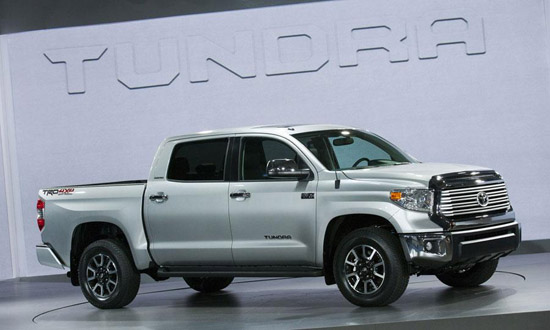
The 2014 Toyota Tundra is a pretty solid stock truck. Yet, it isn’t without improvement. Here are our top 10 accessories you can add to make it better.
Husky/WeatherTech Floor Liners
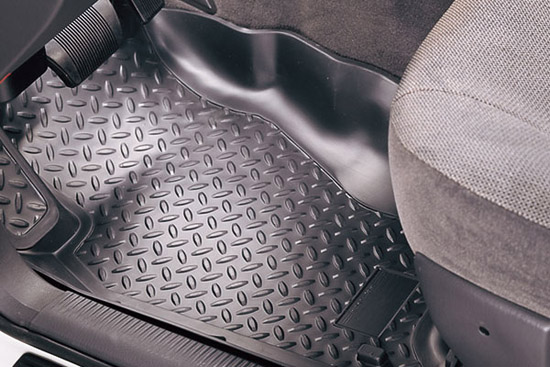
One of the simplest and quickest upgrades you can is with better floor mats.
Let’s face it, the stock floor liners in the Tundra aren’t the best they could be. This is where aftermarket companies like Husky and WeatherTech do a much better job of protecting the cab and your investment.
There are many different styles/colors and grades. Like most things, you get what you pay for.
K&N Air Filter
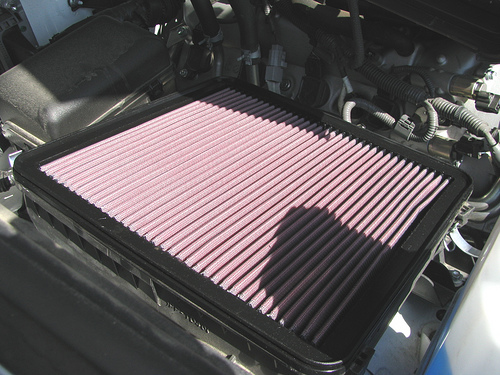
Aftermarket air filters like this K&N is a great upgrade to every truck.
Hands down, the cheapest and simplest way to get a tad bit more power, fuel economy and improved engine sound is installing a K&N Air Filter. These filters have for years now been a first “mod” item in nearly everybody’s truck and custom build thread. The truth is they work and they are a lot cheaper than adding a cold air intake kit.
Check out our K&N air filter review – we recorded a 1 MPG fuel economy gain!
New Grille Inserts

Nothing seems to “personalize” or make a truck stand out more than a new grille insert.
No matter how you view it, the new 2014 Tundra has a polarizing front end look. This is especially the case with regards to the grille. A cheap way to change this and/or give your truck a custom look is to switch it out.
Grille inserts come in a full range of styles including billet, mesh and custom lettering. Shop around a bit on the internet and you will find all sorts of different ideas.
Grille Guards
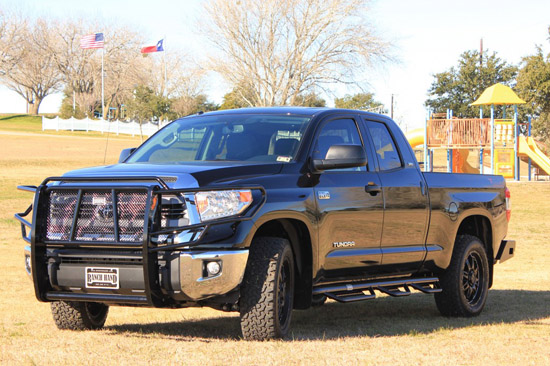
Grille guards don’t just improve the looks of the truck, they offer protection as well.
Buying a truck is really about making an investment. You want it to last for a long-time and keep it looking nice. Enter grille guards. Like grille inserts they come in all types of different styles/flavors. Plus, they help create a “custom” look for your truck.
Spray-In Bed Liner
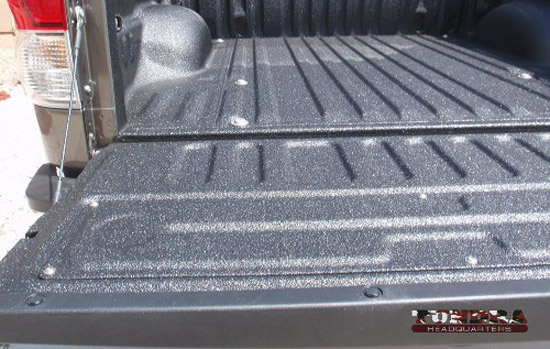
Spray-in bed liners are a great addition with many benefits.
It’s a shame the Toyota Tundra doesn’t come with a factory spray-in bed liner (unless you live in the Southeast where the distributor adds one). This is easily a must for anyone who uses their bed. After a while, not having a bed liner creates many problems and inconveniences like:
- Bed’s paint (protective coating) scratched – increases likelihood of rust developing
- Footing is slippery when wet
- Cargo slips and slides around
- Dings and dents form more easily
While the bed may not be a big deal to some truck owners, most everyone can agree they want it to last. A bed liner, ultimately, makes it last longer.
There are two big spray-in companies: Line-X and Rhino. Check out our debate on which one is best.
Tonneau Covers
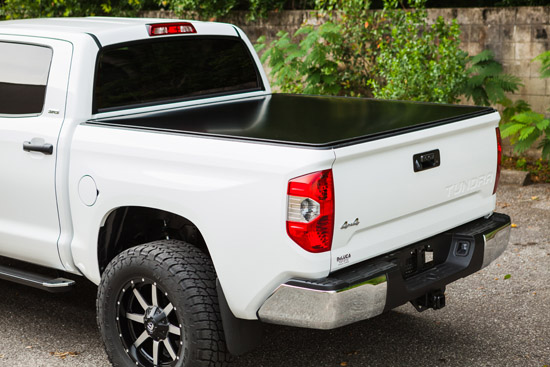
Tonneau covers do a great job of protecting your load and can be stylish as well.
Consistently ranked among the top accessory items on almost all automotive sites, Tonneau covers are a really useful addition. The fact is when it comes to protecting your cargo, you can go with a topper, a Tonneau cover or a tarp. While the topper is limited due to height and the tarp, is well, a tarp, a Tonneau cover is the more versatile option. In its normal position, it holds back the elements while protecting anything you can throw into the bed. If you have a larger item, it can be rolled up, retracted or folded up out of the way.
One can’t mention Tonneau covers without a nod to the aerodynamic debate over fuel economy. We have analyzed it and consider it a myth, HOWEVER, there are those who swear by it. We will let you make your own conclusions.
Cat Back Exhaust Systems
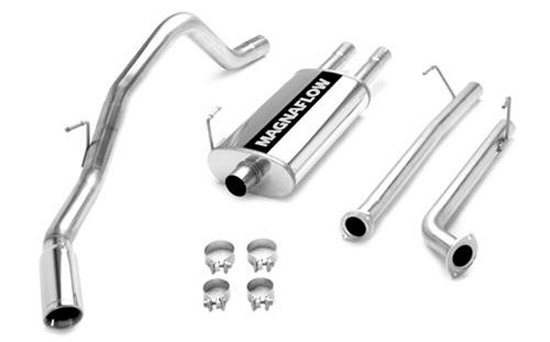
A custom exhaust isn’t just for sound, it can improve performance as well.
Another way to improve performance is through adding a Cat Back exhaust system. This kit typically is made up of a rear-pipe, a resonator and a muffler. Depending on the model you buy, it can also include other pipes.
Most people and companies that sell these systems like Flowmaster, Magnaflow, Borla, etc. see an improvement in power. This is due to the improvements in air flow over stock systems. While the Tundra has a pretty awesome stock exhaust system, aftermarket suppliers have found ways to improve it.
Also, there can be an increase in fuel economy. Again, this is thanks to freeing up the air flow which causes the engine to not have to work as hard.
Lastly, there is the obvious sound improvement. If you want your Tundra to really sound like a truck, a Cat Back exhaust system is one way to go.
We analyzed some of the major cat back exhaust systems on this post.
Cold Air Intake Kits
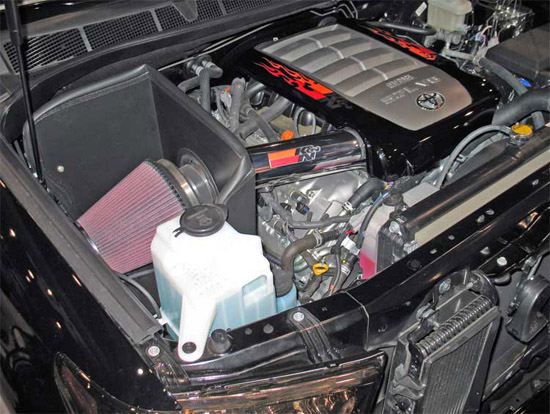
Cold air intakes have their fans and enemies. While the debate may rage on the return on investment, they do provide some benefit.
Improving air flow is a key ingredient to better performance and while exhaust systems and air filters help, a cold air intake is yet another way to add air to the engine. The idea with a cold air intake is to harness the more dense air and send it to the engine thereby improving performance.
The big question with Cold Air Intakes is: do they work? There is an ongoing debate on this issue and we weighed in with our thoughts here.
There are several manufactures of cold air intake systems like K&N, Volant, aFe or AirRaid. We reviewed several of these kits including the Volant. Click here to see our review.
Lift Kits
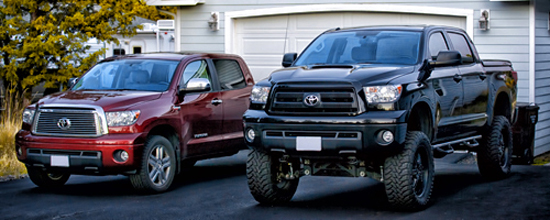
It’s pretty easy to see the difference between a lifted and non-lifted Toyota Tundra.
One of the most visually altering modifications on this list has to be lift kits. They are offered in many different sizes from a simple 1″-3″ lift kit to the SEMA show rides with 12″ lifts. There are many different variations of kits including spring over axle, shackle reverse, coil suspension and others. You could literally write a book on all the different kinds of lifts, ways to install, benefits to certain ones, tips to align the tires and improve ride quality.
We covered some basic information on leveling and front end lift on this post. Also, we have this post showing the visual difference between a stock Tundra and a lifted one.
Many manufactures offers kits like Bulletproof, Pro Comp, High Country, Toytec, California SuperTrucks, etc.
Upgraded Wheels and Tires
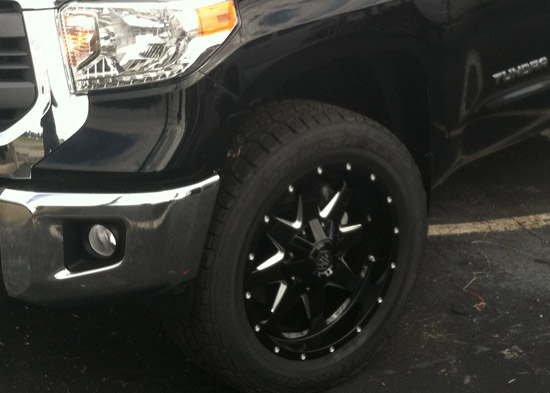
Upgrading wheels is a pretty common modification.
Going hand-in-hand with the lift kit discussion is wheels and tires. Many new truck owners want to change the stock tires to either personalize their ride, raise the truck or improve off-road performance. In many cases, you can find a lot of tires and styles that fit a stock Tundra. Yet, there are many cases where you need a lift kit first before you can add larger tires.
Check out this post for a better understanding on how high you go with your stock Tundra.
Many tire manufactures make great tires for the Tundra like Bridgestone, Goodyear, BF Goodrich, Nitto among others.
What is the on your list as must additions?
Filed Under: TundraHeadquarters.com


I took the K&N filter out of my truck and went back to a stock air filter. Cleaning it was a PITA.
With a stock paper filter back in place the truck runs the same. No power difference and no different in MPG.
That K&N stuff is a scam.
Larry,
That’s interesting. The MPG gains from a K&N filter are pretty minor and I would guess you wouldn’t see anything immediately. It is a small long-term gain. Did you check out our review?
-Tim
Yes I did and I have to say the data i flawed. I won’t go into the details but , think about it. If any air cleaner becomes totally blocked we lose power because the EMC will see no manifold pressure. No air coming in, no fuel injection. We will lose power but MPG will go up with a clogged filter. MPG will go up because we can’t burn fuel without air. Less power, slower speeds, less fuel burned. We can’t go 70 with a loaded truck so we must accept slower speeds and less fuel burned.
K&N saves .30 mpg at best is all. Not really worth it unless you plan on keeping your tundra for over 80K miles since most stock air filters under normal hwy. driving will last 50K miles. They say 30K miles but I have always checked mine around 25K or so and besides a few bugs, looks almost new still almost all white inside definitely not needing replacing at 30K miles more like 50K miles of hwy. driving, not off-road.
the cost difference is not much more to get a K&N vs. stock toyota OEM air filter so I’d suggest if need one at 40K or more, get a K&N.
What about bug deflectors or air deflectors around windows? I know bug deflectors were much more popular in the 80’s and 90’s, but is a cheap investment under 100 bucks if going to keep the tundra and drive on pea gravel roads where rock chips are common although it doesn’t stop all bug splats or rock chips.